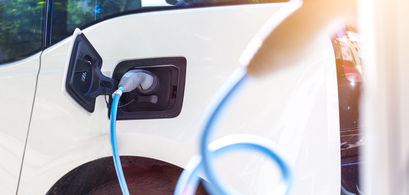Increasing Fuel Efficiency
Increasing the efficiency of a car is a lesson in physics. Automobile manufacturers can attempt to extract more miles per gallon of gas in several ways:
Reducing Wind Drag: through exterior design changes, the amount of wind drag on a car can be reduced. This is usually stated in terms of the car's drag coefficient.
Engine Technologies: manufacturers can attempt to increase the overall efficiency of the combustion process occurring in the car's engine.
Reduce Friction: this involves reducing the friction in the moving parts in a car, usually targeting the drive train or transmission.
Decrease Weight: finally, manufacturers can incorporate lighter weight materials such as carbon fiber into the car's design in an attempt to lower the car's curb weight.
Buying a Fuel Efficient Car
While it's helpful to be handed a list of the most fuel efficient cars, it's also important to understand what makes a car more resourceful than others. The "next generation" of cars on the road will employ multiple technologies to increase the miles per gallon of the vehicle. When visiting a car dealership, some of the fuel efficiency technologies that might be encountered appear below, alternatively you can use online car tools to work out the power and efficiency of your existing car.
Engine Technologies
The key to a more efficient engine is controlling the combustion that takes place in each cylinder. The following engine technologies are recognized as those capable of making a significant impact on a car's overall fuel efficiency.
Variable Valve Timing and Lift
Also known as variable valve actuation, variable cam timing, and variable timing and lift electronic control. Regardless of the name used, the valves on car control the amount of air and fuel flowing into an engine's cylinders.
As an engine's speed increases, the optimal setting for valve lift and timing changes. Traditional engine designs use fixed timing and lift settings that are a compromise between low and high speeds. Engines with variable valve timing and lift automatically adjust to the engine's speed, thereby optimizing the flow of air and fuel.
Cylinder Deactivation
Also known as displacement on demand, multiple displacement, and variable cylinder management, this engine technology increases fuel efficiency by deactivating some of the car's cylinders when they are not needed. For example, when a car reaches a steady cruising speed, one or more of the engine's cylinders no longer receives fuel.
Deactivation can be used on six and eight-cylinder engines, and still maintain an engine's smoothness.
Turbocharging and Supercharging
Superchargers and turbochargers are fans that force air into an engine's cylinders. Superchargers are powered by the engine itself, while turbochargers are powered by the car's exhaust.
Turbochargers and superchargers increase fuel efficiency because the air forced into the car's cylinders produce a more powerful ignition of fuel and air.
Direct Fuel Injection
Also known as fuel stratified injection, and direct injection stratified charge, this technology involves directly injecting fuel into the car's cylinders so that the timing and even the shape of the fuel mist can be more precisely controlled. In conventional multi-port engines, fuel is injected into a port and allowed to mix with air before entering the car's cylinders.
Integrated Starter / Generator
With an integrated starter or generator, the car's engine is automatically turned off when it comes to a stop. When the accelerator is depressed, the car is restarted instantly. Fuel efficiency is increased by eliminating the gasoline wasted while the car is idling.
Transmission Technologies
The car's transmission takes the power generated by the engine and turns it into the rotational energy of the car's wheels. The following transmission technologies are recognized as those capable of making a significant contribution to overall fuel efficiency.
Continuously Variable Transmissions
Conventional automobile transmissions use a fixed number of metal gears to control the ratio between engine speed and the wheel speed. Continuously variable transmissions use a pair of variable diameter pulleys connected to a belt or chain that's able to produce an infinite number of engine-to-wheel ratios.
With continuously variable transmissions, there is no jerking or lurching from the changing of gears or downshifting. This type of transmission provides the car with a steady rate of acceleration, smoother ride, and better fuel efficiency.
Automated Manual Transmission
Automated manual transmissions are a hybrid between manual and automatic transmission. Due to their design, manual transmissions are lighter and suffer less energy loss while changing gears. Automatic transmissions, allow the driver to change gears without depressing a clutch or shifting.
With automated manual transmissions, the car is shifted electronically (also known as shift by wire). The technology combines the fuel efficiency of manual transmissions with the smooth operation of an automatic transmission.
